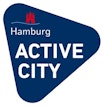3 Reasons to Harness the Power of the Peloton
13 June, 2017

Group riding is your ticket to fun and success on and off the race course. Here's how to make it work for you.
by Melanie McQuaid
Competitive group rides and bike races provide optimal grounds for honing speed, power, and bike handling skills. They are also a powerful networking opportunity.
Triathletes often overlook the benefits of group riding, choosing the structure and predictability of training alone, or with one or two others. However, important training benefits aside, hearing the sound of spinning wheels, watching the countryside rush by, and rolling in unison with other riders is an exhilarating experience. Read on for reasons why joining a group ride, entering a road cycling race, or buying a racing license should be on a triathlete’s radar for the following reasons.
Get faster
Riding to work, cycling with friends, and following an individual training plan all improve fitness on the bike. Cycling in a pack or peloton, however, takes cycling fitness to a different level.
A competitive group ride or race (sometimes it's hard to tell the difference!) is comprised of maximum effort intervals at random, as athletes test each other with "attacks" or surges. These changes in pace are unpredictable and can be extremely difficult to stay with, but are the key to improving strength and power on the bike. Moreover, reacting to group dynamics and the excitement and adrenaline of riding in a group creates training efforts that are impossible to achieve alone.
Jess Cerra is a triathlete who switched her focus over the past few years to road racing. "What a triathlete might be missing by not racing on the road is learning a lot about practicing patience, reacting on instinct, and pushing themselves in a different setting," she says. For example, you push your threshold limit many times in a race, so it could be a form of training to raise your lactate threshold."
Become a better bike handler
Riding in the pack requires good instinct for wind direction, managing speed behind other riders (in the draft), attention to group dynamics, and relaxing the upper body while under physical stress. Riding in a group trains athletes to be relaxed when uncomfortable, and ready to react quickly.
The skills acquired riding in a peloton translate to safer cycling in general, as group riding cultivates a broader awareness of one's surroundings. Cyclists need to toggle their awareness from themselves, to their fellow riders, to the road ahead, and to the potential race dynamics to come. This "awareness multitasking" makes for safer cyclists who are better at anticipating danger. In addition, handling skills at high speed translate to better skills in traffic, on sketchy road surfaces, and avoiding unexpected obstacles. All of this adds up to a safer cycling experience.
The best way to learn these skills is to start riding in a group. Triathlete Tyler Butterfield did some road racing in Europe during his career. "The main thing with cycling and any sport is to enjoy it and have an open ear and mind to learning," he says. "Bike racing is awesome and fun! It was easy for me as I got on a great amateur team in Europe when I didn't even speak the language. I had to just enjoy the experience, follow the better guys in the team, and learn how to race in a large bunch. Those are still some of the fondest memories and hardest races I've ever done!"
Create a social network
Riding bikes in a group is a great way to combine a conversation with a workout. In fact, cycling has been compared to golf in its potential for networking opportunities. Many men and women in the prime of their careers are fitting in cycling for fitness and stress relief.
There are times in the group where the pace is comfortable and athletes can socialize while riding. This is a great way to meet new people who share a passion for sport. Often, groups will begin or end the ride at a coffee shop to prolong the conversation and celebrate accomplishing a hard effort.
Although races have individual entry, athletes might also wish to enter as teams. This adds a strategic component to racing, when individual athletes work together towards a common goal. The race becomes a chess game of strategy where each member contributes to the effort, using the strengths of the group as a whole to get a teammate to the finish line first. This team dynamic brings racers together and adds an element of camaraderie to an otherwise individual sport.
Cerra finds the team element of bike racing very compelling. "Nothing is like the feeling of when your team is working together like a solid unit," she says. "The sense of pride and accomplishment as a team is incredibly rewarding, even if you are killing yourself for another teammate."
Although Butterfield chose to stick to triathlon, there was no turning back for Cerra: "The best part about racing on the road is you don't have to run afterwards, and no one would miss that!
Sign up for a VELOTHON event today!











.png?h=106&auto=format)







.png?h=106&auto=format)




